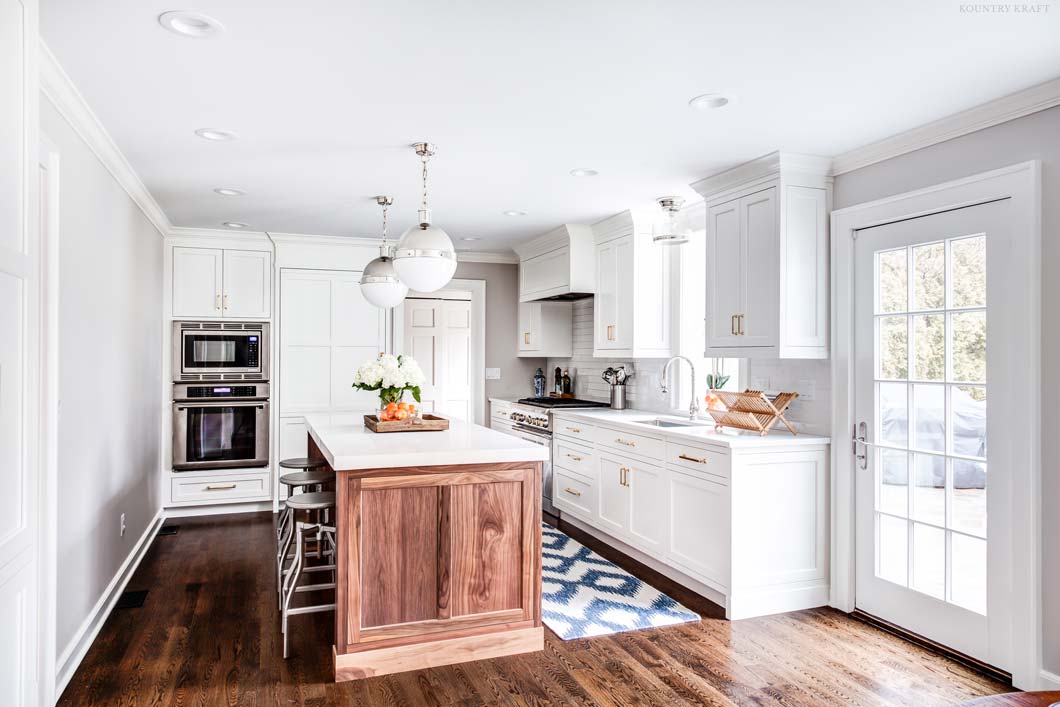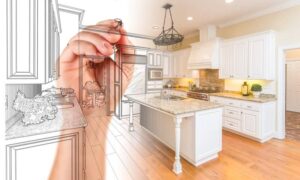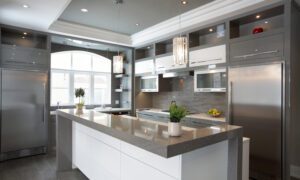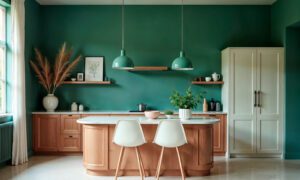A kitchen cabinet remodel offers a unique opportunity to improve the usability and aesthetic appeal of one of the most essential rooms in the home. Cabinets are the foundation of kitchen design, shaping how the space operates daily and defining its visual tone. For a remodel to be successful, it must balance beauty with purpose. Streamlined layouts, durable finishes, and thoughtful storage features all contribute to function, while color, texture, and hardware express personality. The right combination turns an ordinary kitchen into one that feels as good as it performs.
Blending form and function with smart cabinet design
- Designing Layouts That Support Daily Tasks
The layout of your kitchen cabinets plays a direct role in how smoothly the space functions. Cabinets should be arranged to support how you cook, clean, and interact with others in the kitchen. For instance, drawers near the stove should house cooking utensils, while pantry items are better placed closer to food prep zones. Tall cabinets can conceal everything from broom closets to appliance garages, keeping clutter out of sight. This zoning approach makes it easier to move around efficiently, particularly in high-traffic kitchens. Thoughtful spacing between drawers and doors also prevents congestion when multiple people use the space simultaneously. Many homeowners working with Hunt’s Kitchen & Design of Scottsdale choose layouts that reflect their routines, whether incorporating a coffee station, spice pull-outs, or deep drawers for pots and pans. Customizing cabinetry around daily habits ensures the remodel feels intuitive and personalized.
- Choosing Materials That Balance Durability and Style
The materials you select for your cabinets should be tough enough to handle everyday wear while still aligning with your design goals. Wood remains a popular choice because of its strength and visual warmth. Oak, maple, and cherry offer varied grain patterns and take well to different finishes, making them versatile for both traditional and modern kitchens. For a sleeker look, engineered materials such as MDF with laminate or thermofoil surfaces provide clean lines and stain resistance. It’s important to consider how the material will age, especially in a room exposed to heat, moisture, and frequent use. Cabinet doors should close smoothly and withstand repeated opening without warping or cracking. At the same time, finishes and colors set the tone of the space. Whether you gravitate toward dark espresso stains, muted grays, or creamy whites, the finish becomes a backdrop for the rest of the kitchen’s textures and accents. The right material offers the perfect union of endurance and elegance.
- Adding Storage Solutions That Feel Seamless
Storage upgrades are one of the most practical reasons to remodel kitchen cabinets, but how those solutions are integrated can also enhance the room’s overall style. Pull-out trays, corner carousels, and vertical dividers bring ease and organization to daily routines. When these features are built into the cabinetry instead of added later, they maintain the kitchen’s visual flow. Trash bins can be tucked into drawers, mixer lifts can rise from lower cabinets, and spice racks can slide out from slim vertical slots beside the oven. These details are not only functional, they’re also sleek and discreet. Hidden storage contributes to a clutter-free look, especially when paired with frameless or inset cabinet doors. Soft-close hardware adds a subtle luxury to every motion. Design choices like glass-front doors or open shelving can offer a contrasting aesthetic while still being purposeful, ideal for displaying glassware or cookbooks. Function becomes more beautiful when it’s fully integrated.
- Using Color and Texture to Define Atmosphere
Color plays a significant role in marrying function and style, as it influences how a kitchen feels and how easy it is to maintain. Darker cabinet colors may hide fingerprints and stains more easily, while lighter tones reflect light and open up the room. Warm woods can create a cozy, inviting vibe, while cool neutrals deliver a modern, streamlined look. Textured finishes like wire-brushed wood or matte paint add subtle character that elevates plain surfaces without overpowering the space. Combining textures—like mixing painted cabinets with natural wood islands—adds depth and visual interest. Hardware choices such as brass, matte black, or brushed nickel offer opportunities to layer in contrast or unify the look. When cabinets are thoughtfully colored and finished, they become a design statement while still being fully functional. These stylistic decisions create emotional resonance in the room, influencing how it’s experienced throughout the day.
- Planning for Longevity and Flexibility Over Time
A kitchen cabinet remodel should accommodate current needs and future lifestyle changes. Flexible design ensures the space adapts as family size shifts, cooking habits evolve, or technology advances. Modular cabinet inserts can be swapped out or adjusted to suit different uses. Adjustable shelves, removable dividers, and universal drawer depths help future-proof the storage layout. Aesthetic choices should also hold up over time. Timeless designs—such as shaker doors, muted color palettes, and classic materials—blend well with evolving trends and keep the space from feeling dated. Good lighting design, including undercabinet and in-cabinet illumination, adds visual clarity and functionality for years. Investing in quality hinges, drawer glides, and durable finishes means fewer repairs and replacements. Thinking long-term doesn’t limit creativity—it encourages smarter decisions that balance visual flair with practical return. When your remodel anticipates change, it feels functional and stylish through life’s natural shifts.
Combining functionality and style in a kitchen cabinet remodel means making thoughtful choices that serve everyday needs and aesthetic goals. From layout and materials to storage features and finishes, each element contributes to a kitchen that looks great and works even better. When cabinets are tailored to daily routines and built with future flexibility in mind, they offer enduring satisfaction. A remodel grounded in purpose and personality turns the kitchen into a space that’s practical and inspiring to spend time in. This fusion of form and function transforms a good kitchen into a remarkable one.



































